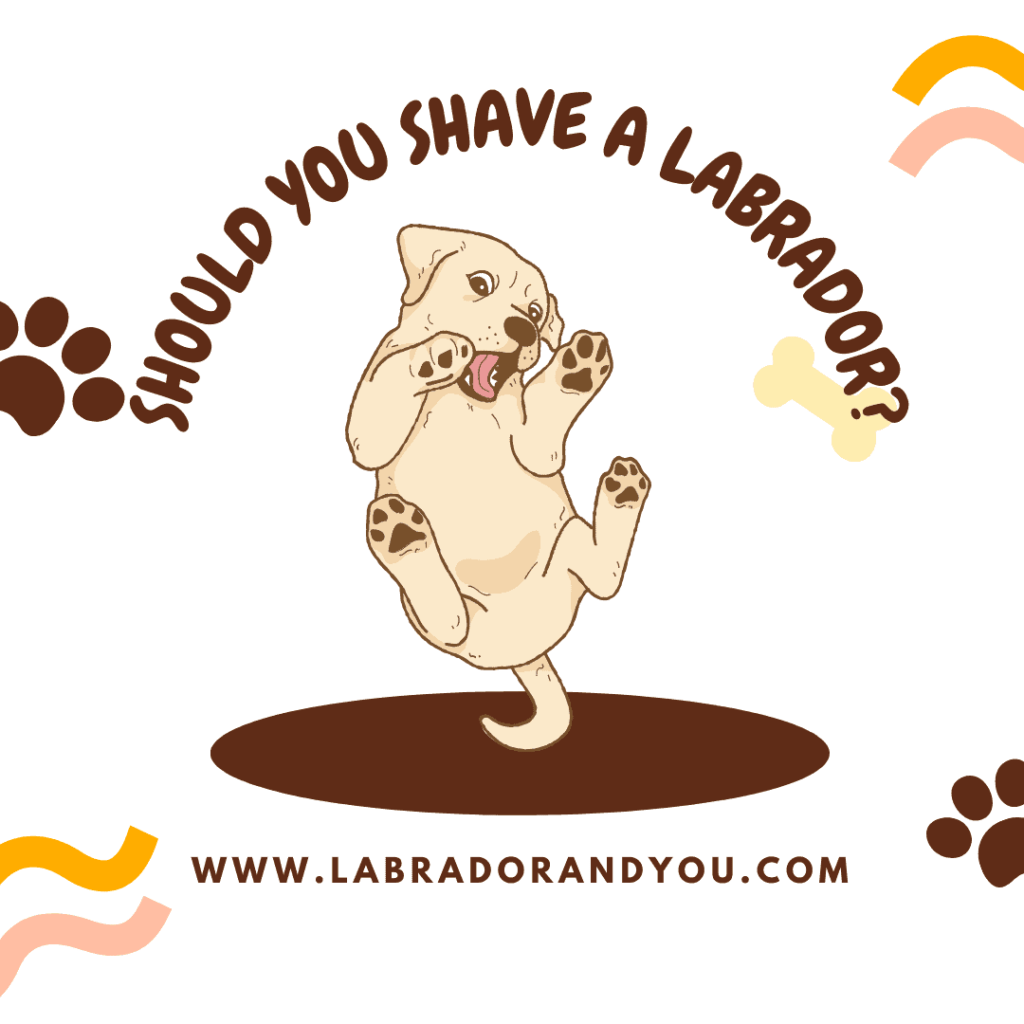Labrador Retriever’s tail is a distinguishing characteristic of this large dog breed. The labrador tail is thick and muscular, gradually tapering towards the tip. Unlike other retriever breeds, Labradors have minimal feathering on their tails. Their tails are covered in dense, water-resistant, short fur. It helps them swim efficiently and powerfully, making them excellent hunting companions.
Labrador tails are also an essential communication tool, wagging excitedly when happy and drooping low when sad or tired. Proper care of your Lab’s tail includes regular grooming to prevent matting and infections. Monitor for any signs of injury or discomfort.
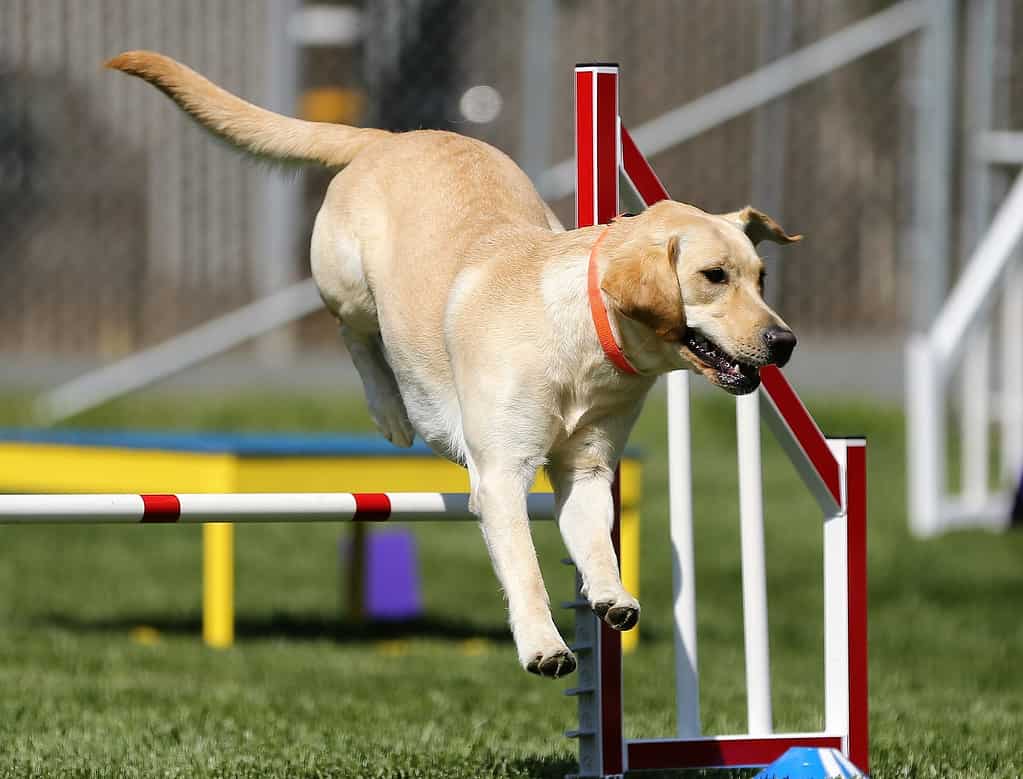
The Labrador Tail: A Thorough Guide
The Labrador Retriever’s tail is one of its defining features. It serves important functions like communication, balance, and coordination.
Anatomy And Features Of A Purebred Labrador Tail
The anatomy of a Labrador Retriever’s tail is unique and distinguishes this beloved breed. Beginning with a thick base, the tail tapers gracefully towards the tip, forming an “otter-like” appearance.
- It comprises 5-20 vertebrae, with larger bones at the base and smaller ones near the end.
- These individual segments are separated by soft discs – similar to those found in spinal columns – providing flexibility for movement.
- A key characteristic in Labradors is a “twizzle” at the tip of their tail. This natural curl helps them maneuver effortlessly through water or tight spaces during adventurous pursuits.
- Labrador puppy tails are built with strength and adaptability. It allows them to communicate emotions efficiently or swiftly navigate through tricky situations.
Labrador Tail Types
Labrador tails cannot be explicitly divided into different types. However, the tails may appear different from one dog to another. The reason for what they were bred can make a difference. Show dogs are bred to match the distinct breed standard.
The tail must be otter-like, no longer than a labrador’s hock, and not too short per breed standard. It should follow the dog’s topline and no feathering like a Golden Retriever or other dogs.
Dogs not bred for appearance can have a distinct look. A working lab can have a thinner, longer, shorter, or curly tail. Every other dog of this breed may not have the same thick tapering tail. Two dogs can have tails with slight variation.

Lab Tail Colors
The variations can occur in any lab type, whether black labrador retriever or yellow. A black lab tail, a yellow lab tail, or a chocolate lab tail can be slightly different.
The Significance Of A labs tail
A dog’s tail is important to its body language and communication. It serves as a way for dogs to express themselves, whether happy, scared, or nervous.
- If a Labrador Retriever wags its tail rapidly from side to side with excitement when greeting you, it indicates happiness.
- If their tail is tucked between their legs while cowering away from something or someone, it shows that they are fearful or anxious. A dog’s tail is essential for balance and coordination during running and jumping.
The Evolution And History Of The Labradors Tail
The Labrador Retriever’s tail has a rich history, dating back to its origins in Newfoundland, Canada. These dogs were originally bred for fishing and hunting.
- Their powerful tails were essential for diving into icy waters and retrieving fish from boats.
- Their tails were also selectively bred for balance, coordination, agility, and communication.
- The thick base provided strength while swimming or moving about in the water or on rough terrain.
- The thin tail tapering toward the tip enables nimble movements on land or water.
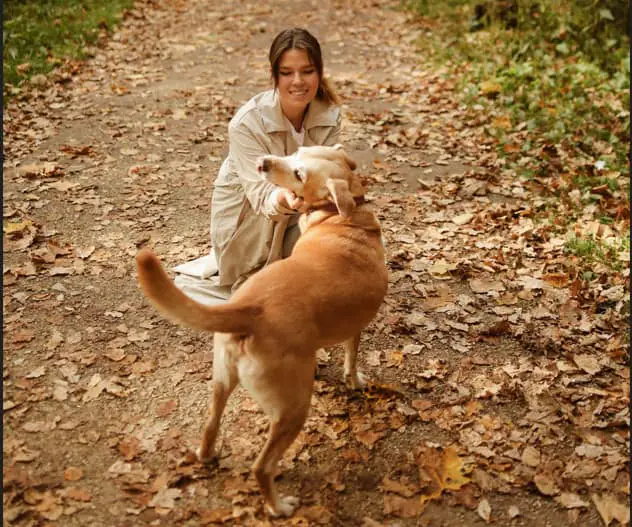
The Purpose And Functionality Of A Labrador Tail
The primary function of the tail is to ensure a well-balanced labrador retriever.
Communication And Expression Through Tail Movements
The Labrador Retriever’s tail is a critical communication tool to express emotions and convey messages. When your Labrador wags its tail vigorously while jumping around, it reflects excitement.
A slow tail wagging signifies uncertainty or confusion, while a tucked tail between the hind legs shows submission or anxiety. Dogs communicate with their entire body language, not just their tails alone. They use subtle cues such as ear movements, eye contact, posture, vocalizations, and tails to express feelings.
Balance, Coordination, And Agility
The thick base of their tail is a counterbalance when running or jumping. It allows them to make sharp turns and sudden stops easily. When swimming, the tapering shape of the tail helps generate thrust in the water.
A strong and healthy tail is crucial for your dog’s physical well-being. Ensuring your Labrador gets plenty of exercise and playtime keeps their tails happy and maintains good muscle tone.
Swimming And Water Activities
Labrador Retrievers love water, and their thick tail is a powerful rudder. The breed was originally developed to retrieve from water bodies, making it an integral part of their DNA. A Labrador’s strong tail helps them swim efficiently, even in rough conditions or strong currents. It provides balance while standing or moving on slippery surfaces like rocks or boats.
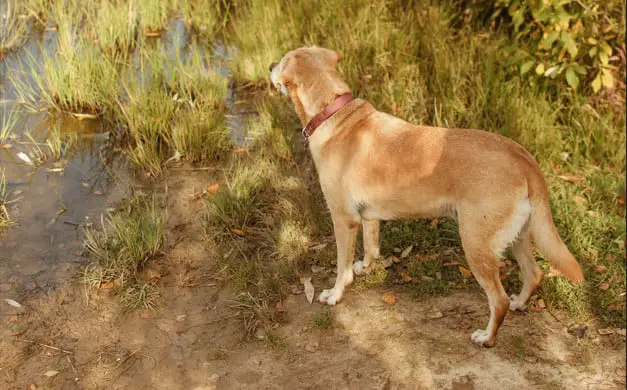
Common Health Issues Associated With Labrador Tails
Labrador tails are prone to certain health issues like Limber Tail Syndrome, tail injuries and fractures, and tumors or cancer.
Limber Tail Syndrome: why is my dog’s tail limp?
Labrador Retrievers are prone to Limber Tail Syndrome, also known as Cold Water Tail or Swimmers’ Tail. This painful condition causes the tail to become limp and flaccid. It can occur suddenly, usually after intense physical activity like swimming or overexertion.
- Muscle strain or injury to the muscles in the tail’s base causes it, leading to inflammation and pain.
- Most cases of Limber Tail Syndrome resolve themselves within a few days.
- Supportive care like rest, heat therapy on the tail base (using a warm washcloth), and anti-inflammatory medication help.
- Limber Tail Syndrome is not life-threatening but can be very uncomfortable for your dog.
Tail Injuries And Fractures
Labrador Retrievers are susceptible to tail injuries and fractures. A wagging tail may look harmless, but it can be quite powerful and easily hit hard objects, causing injury.
Fractures and dislocations are more common in dogs with short or thin tails. Limber Tail Syndrome is another condition that affects the Lab’s tail, causing pain and stiffness. Treatment includes rest, anti-inflammatory medication, and sometimes physical therapy.
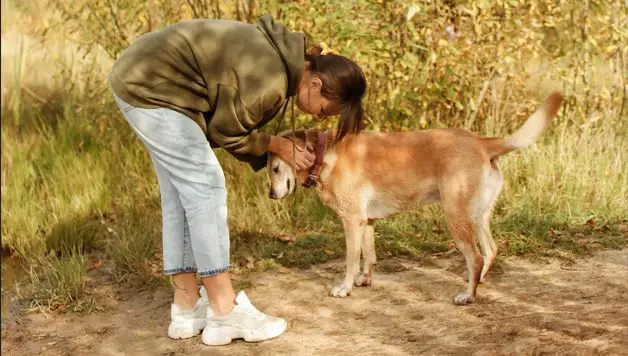
Tumors And Cancer
Tumors and cancer can also affect a Lab’s tail. Mast cell tumors, including Labradors, are the most common type of tumor found in dogs. These tumors originate from white blood cells and can manifest differently depending on their location.
If located near the base of the tail or spine, it may cause pain or discomfort. Other cancers impacting a Lab’s tail include osteosarcoma (bone cancer) or soft tissue sarcoma. Regular visits to the veterinarian detect any potential health issues early on so they can be treated promptly.

Proper Tail Care And Maintenance For A english lab tail
To maintain a healthy Labrador tail, it is important to groom the fur regularly. Provide exercise for proper circulation, and ensure adequate nutrition with supplements like fish oil or glucosamine.
labs tails: Regular Grooming And Hygiene
Keeping your Labrador’s tail clean and well-groomed is important to its overall health. Here are some tips for regular grooming and hygiene:
- Brush your Lab’s tail regularly to remove dirt or debris.
- Keep the fur around the base of their tail trimmed to avoid matting or tangling.
- Use a dog-friendly shampoo to wash their tail when needed.
- Dry your Lab’s tail thoroughly after bathing or swimming to prevent skin irritation and infection.
- Trim any long hairs on their tail using sharp scissors or clippers, careful not to cut too close to the skin.
- Check for any signs of injury, such as cuts or bruises, and seek veterinary care if necessary.
- Note any changes in your Lab’s tail appearance or behavior, which may indicate a health issue.
Exercise And Activity For Tail Health
A Labrador Retriever’s tail ensures balance and coordination during exercise and outdoor activities. Swimming, running, and playing fetch are all excellent ways to keep your dog active while promoting a healthy tail.
Give your furry friend plenty of opportunities to swim in open water or a pool. Water activities help strengthen their powerful tails as they paddle through the water. Running on soft surfaces like grass, sand, or dirt keeps their joints healthy and reduces the risk of joint problems. It can affect their tails over time.
Nutritional Requirements For A Healthy Tail
A healthy diet maintains the overall health of your Labrador Retriever, including its tail. A balanced and nutritious diet includes high-quality protein, vitamins, minerals, and fatty acids. Fatty acids maintain healthy skin and dense coats, promoting healthy tails.
Hydration is crucial for a happy tip-tapping tail! Provide clean water at all times so they remain hydrated throughout the day.
Celebrating The Beauty And Breed Standard Of lab otter tail
AKC standards for Labrador tails require a thick base that tapers gradually and a medium-length tail with free movement.
AKC Standards For Labrador Tails
The American Kennel Club (AKC) has established specific standards for the tail of a purebred Labrador Retriever. The ideal Labrador tail should be thick at the base and gradually taper toward the tip, with no signs of kinks or knots.
According to AKC breed standards, a wagging tail can indicate friendliness. But excessive wagging or stiffness can denote fear or aggression. Proper communication through tail movements is critical in understanding your dog’s emotions, so observe their body language.
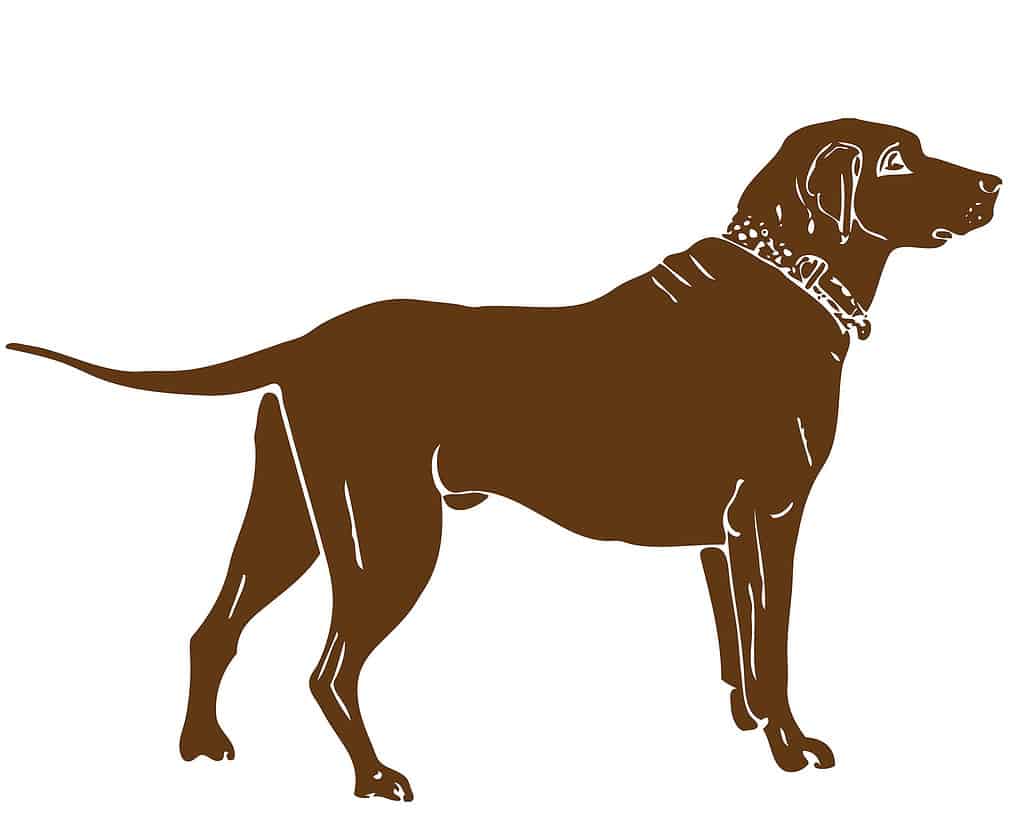
Importance Of Tail Health In Breed Preservation
Maintaining the health of a Labrador’s tail is crucial for breed preservation. Their tail’s length, thickness, and shape have evolved to meet the needs of this working breed. Docking or altering their tails can cause unnecessary pain and discomfort, leading to long-term health issues.
By paying close attention to your Lab’s tail health, you’re preserving the integrity of this beloved breed. With proper care comes better communication through body language signals. It gives us more insight into our furry friends’ moods and behaviors.
FAQ On Lab tail
What is special about a Labrador’s tail?
A lab’s thick otter tail acts like a powerful rudder. While it is the most significant feature, the tail is also essential to learn about a dog’s body language and emotions.
do labs have curled tails?
Labrador tail is medium and not longer than the hock per breed standard. However, some tails can be different from the standard. However, a labrador tail does not curl up over its head.
do golden retrievers tails curl up?
Yes, golden retrievers can have curled tails. This is not a breed standard, but it is not uncommon either. Some golden retrievers may have a slight curl in their tail, while others may have a more pronounced curl that goes all over their back.
What is the otter tail on a Labrador?
The otter tail in a labrador is a thick rounded appearance. The thick look comes from the thicker coat. The tail has a small c-shape, is pointed downward, and is fairly straight.
What does a Labradors tail look like?
Labradors usually have a thick tail base that tapers toward the tip. It is free from feathering and is medium in length. It is thick with a short and dense coat surrounding it and gives an otter-like appearance.
What does a lab tail mean?
A stiff lab tail held high reflects confidence and dominance. It means your labrador will not back down. A low tail tucked between the legs indicates fear.
do labs have long tails?
Labs have thick and sturdy bodies with broad heads and long otter-like tails . The tail helps them steer in the water and reflects their emotions.
how many hairs does a labrador have?
Labrador retrievers have about 15,000 hairs per square inch of skin. This means that a full-grown Labrador retriever with an average surface area of 20 square feet would have about 300 million hairs on its body
Why does my Lab puppy have a curly tail?
A lab can have a curly tail due to genetic variations. It can also occur when a lab is bred with another dog breed with curly tails. The happy tail syndrome can also cause a curly tail.
why dogs tail is not straight?
Genetic traits determine the specific tail shape of a dog and can vary from straight to curved or curled. This variation results from natural selection, historical environmental factors, and selective breeding practices.
Muscular and ligament structures and developmental processes contribute to the ultimate shape of a dog’s tail.
Author Profile

- Lifetime dog Enthusiast
- Shradha is a seasoned writer at Labradorandyou.com, an authoritative resource for all things Labrador Retriever. Her experience as a pet owner and dog enthusiast drives her to create meticulously researched and fact-checked content, offering valuable insights on Labrador training, grooming, and health. Each article reflects Shradha's passion and dedication, enriched by personal experiences with her beloved Labradors, Tom, and Kurt. Whether exploring breed-specific training techniques or providing product reviews, Shradha ensures Labrador owners receive the most accurate, up-to-date, and trustworthy information, aimed at enhancing their companions' health and happiness
Also by the author
-
 Lab-TypesJune 30, 2025Мостбет Букмекер: Официальный Сайт Игровых Автоматов Mostbet Bookmaker
Lab-TypesJune 30, 2025Мостбет Букмекер: Официальный Сайт Игровых Автоматов Mostbet Bookmaker
-
 MonobrandJune 30, 2025Fontan Casino ️ One Hundred Pln Darmowy Zakład Bez Depozytu
MonobrandJune 30, 2025Fontan Casino ️ One Hundred Pln Darmowy Zakład Bez Depozytu
-
 Lab-TypesJune 30, 20251xbet Зеркало рабочее На Сегодня прохода На Сайт 1хбет Обновлено!
Lab-TypesJune 30, 20251xbet Зеркало рабочее На Сегодня прохода На Сайт 1хбет Обновлено!
-
 Lab-TypesJune 30, 2025Мостбет Mostbet Букмекерская Контора: Зеркало, Официальный Сайт, Бонус При Регистрации
Lab-TypesJune 30, 2025Мостбет Mostbet Букмекерская Контора: Зеркало, Официальный Сайт, Бонус При Регистрации



